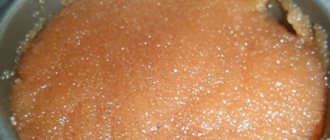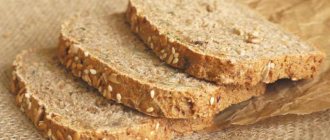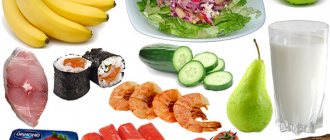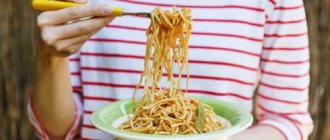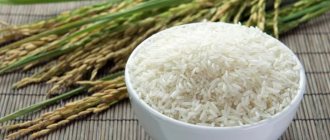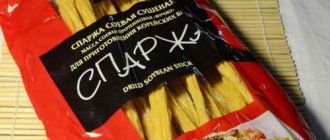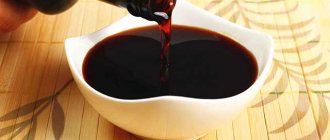Chemical composition of rice noodles
Rice noodles are pasta products made from rice flour.
Due to its transparent structure, it is also called glass. In appearance, it is often confused with funchose. The difference is that the latter consists of bean starch. This healthy product does not require boiling. Before eating, simply add hot water and leave for a few minutes. The main advantage of the product is its composition. It is gluten-free, fiber-free and salt-free. Due to this, the noodles are easily digestible and do not provoke an allergic reaction. The chemical composition of the product is represented by the following components:
- vitamins of groups E, PP and B;
- iron;
- copper;
- calcium;
- alimentary fiber;
- selenium;
- sodium;
- phosphorus;
- potassium;
- saturated fatty acids.
Rice noodles contain 7% protein
The mineral content ensures the strengthening of the musculoskeletal system. Vitamin B present in the composition has a positive effect on the condition of the skin. Iron helps prevent anemia. Saturated fatty acids provide the body with energy and promote the absorption of other components.
Attention! Rice noodles are white in color due to their starch content.
Funchose noodles: description, composition and beneficial properties
Funchoza (starch) noodles are a product of oriental cuisine in the form of white, elastic, plastic threads of various lengths, often rolled into a ring.
Funchoza is tasteless, has a pleasant consistency, and is filling. When cooked, after cooking, it takes on a translucent appearance, which is why it is also called “glass” noodles .
The product is sold dry or completely ready for use. Originally from Southeast Asia. Traditional food in Korea, Japan. The leader in supplies is China.
What is it made from?
Funchoza is the name given to several types of noodles:
- original product made from bean starch (mung, chickpeas, mung bean, yam).
- noodles made from cheaper starches (potato, corn).
- starchy noodles from plants (cassava, quinoa, sweet potato).
Interesting! An analogue of “glass” noodles is shirataki noodles. These are vermicelli or noodles made from the rhizomes of the konnyaku plant.
Did you know... The misconception of many is to classify funchose as a type of rice noodle. Rice and glass noodles are different products.
They differ in appearance, taste and consumer characteristics. Rice noodles are made from rice flour and turn milky white after boiling.
Natural funchose - bean noodles, has a transparent appearance and a more delicate consistency.
Compound
The main benefit of funchose lies in its chemical composition.
A huge content of B vitamins (B1, B2, B5, B6, B9) can positively influence the functioning of the nervous system and improve brain activity.
Vitamin E is the basis of longevity, the strongest antioxidant.
Interesting! Bean noodles are a traditional means of raising the body's strength, because the legendary Japanese samurai ate funchose.
Vitamin PP improves the condition of the circulatory system.
Tocopherol contained in natural funchose prevents the formation of premature wrinkles and restores sagging skin.
The nutritional value of starch noodles is represented by proteins, carbohydrates, fatty acids, fiber, minerals, including:
- phosphorus – maintains visual acuity;
- potassium – cleanses blood vessels, makes them elastic;
- calcium – good for bone tissue;
- magnesium – stimulates the work of the heart muscle;
- zinc – removes carcinogens from the body,
- iron, manganese, selenium, copper, sodium.
Beneficial features
Glass noodles are a healing, highly digestible carbohydrate side dish that improves the condition of muscle tissue. Derived from starch, it gives the body energy and increases vitality. This is important for people engaged in mental work or physically active.
The calorie content of starchy noodles is low. The presence of fat in it is minimal. The carbohydrates contained in funchose are complex and do not make you fat. This makes the product popular in dietary nutrition.
On a note! The caloric content of 100 g of funchose is the same as that of popular side dishes: buckwheat and rice.
Systematic consumption of funchose has a positive effect on the digestive processes and helps normalize the microflora of the gastrointestinal tract.
The fiber in funchose is not as high as in rice, pumpkin or sweet potato, so it harmonizes perfectly with any vegetables, without giving a feeling of excessive heaviness in the stomach.
Without spicy seasonings, this type of noodle can serve as part of the diet of people with gastrointestinal diseases beyond the acute stage.
A large number of amino acids contribute to the formation of new cells, their metabolism (metabolic functions), which contributes to rejuvenation and slow down the aging process.
Funchose is used in therapeutic nutrition for allergy sufferers, since it does not contain gluten, a protein that provokes this disease.
Bean starch is resistant, that is, it does not immediately transform into glucose. This leads to complex beneficial consequences:
- a person receives a wide range of nutrients;
- the speed of digestion becomes normal;
- the condition of the intestinal microflora improves;
- constipation is eliminated;
- The product is used in the nutrition of diabetics.
Bean noodles are a completely cholesterol-free product. Therefore, it is useful for people with high blood pressure, heart problems, and high cholesterol levels in the blood.
A small amount of salt in glass noodles allows it to be included in the diet of patients with kidney disease.
Combination with products
The number of glass noodle dishes is huge. Spicy and sweet, with seafood and vegetarian. Noodles go harmoniously with pieces of meat, smoked chicken, fish, eggs, mushrooms, fresh, stewed and fried vegetables.
Both hot dishes and cold snacks are prepared from starch noodles. It is added to soups and used as a side dish.
Sweet and sour sauces and hot spices are especially combined with noodles. Salads with pickled or fresh vegetables are popular. Various types of nut oils, especially sesame oil, are ideal for seasoning glass noodle dishes.
Adviсe! Serve the salad with funchose warm. When cold, the noodles stick together and lose their attractiveness.
Do not salt the funchose, but add sauces and spices to the finished dish just before use.
The best sauces in combination with glass noodles are made in South Korea; they are less thick. When using Chinese, dilute it with a third of water.
Negative properties
Often, low-quality funchose made from corn starch is bleached with dyes with a high lead content. Such noodles in large quantities are toxic and can cause cancer.
Funchoza is a filler and has no taste of its own. However, sour and hot sauces, generously served with it, have a negative effect on the pancreas, stomach, and liver.
In addition, the same hot, fatty sauces increase appetite, and you lose control over what you eat. And due to the ease with which funchose is absorbed, there is a high risk of overeating on it.
Cooking methods
Funchose is prepared in three main ways.
Steam - place the steaming tray over a water bath and leave for 12 minutes. "reach".
In boiling water - funchose with a diameter of up to 0.5 mm is poured with boiling water, covered with a lid and allowed to brew (5 minutes - no more). Noodles thicker than 0.5 mm are boiled in the same way as regular vermicelli, reducing the cooking time to 3-4 minutes. Place the finished funchose in a colander and let the water drain. Run cold water over the noodles to prevent sticking.
Advice!
Add a tablespoon of vegetable oil to the cooking water.
Roasting method . Heat a significant amount of any vegetable oil in deep fat or in a frying pan and 2-3 minutes. fry. Remove with a slotted spoon to remove excess fat.
Glass noodles will acquire a pleasant crunch and taste of the oil in which they were fried. Funchose “nests” tied with threads are cooked in the usual way, this is convenient, since the rolled noodles do not stick to the wall of the pan and are removed completely, in a single ball.
The finished noodles are cut with scissors or a knife and placed on a cutting board.
How to choose
When choosing funchose, pay attention to color, density and smell. High-quality noodles are translucent, with a slight gray tint and a subtle nutty or bean aroma. High-quality funchose is fragile and brittle, without foreign impurities, even, with a smooth surface. If the funchose is cloudy, stuck together with a foreign smell, refuse to purchase such noodles.
Carefully read the composition, look at the date of manufacture. Choose noodles without artificial additives or cornstarch.
How to store
- Store funchose in a cool, dry, well-ventilated place at room temperature.
- Excess moisture and steam have a particularly negative effect on it. Noodle strings quickly become damp and lose their taste and nutritional properties.
- The best option for storage is thick paper bags or glass containers with a not very tight lid.
- Do not store funchose with spices and other odorous products; it easily absorbs surrounding odors!
- Glass noodles should not be stored in broth or left in water after cooking. The noodles will become soggy and lose their appetizing appearance.
Source: https://dom-eda.com/ingridient/item/lapsha-funchoza.html
What are the benefits of rice noodles?
Rice noodles are considered a rich source of many substances needed by the body. It contains 8 amino acids that take part in the most important life processes. It perfectly satisfies hunger, combining well with many foods.
Its beneficial properties include:
- fast saturation;
- normalization of nutrient balance;
- regulation of the gastrointestinal tract;
- replenishment of energy reserves;
- prevention of anemia;
- easy digestibility.
Experts recommend including rice noodles in the diet of people suffering from diseases of the cardiovascular system. It is especially useful for children and the elderly. Since the product does not contain fiber, it does not cause flatulence or stomach pain. After using it, there is no heaviness.
Due to the sodium and potassium content, rice flour vermicelli normalizes the water-salt balance, which helps get rid of edema. Due to the presence of magnesium in the composition, the product has a positive effect on the functioning of the cardiovascular system. The rich content of vitamin B ensures stabilization of the emotional state.
We invite you to familiarize yourself with the Mukhina Diet - nutrition rules, effectiveness, menu
Properties of rice noodles (funchose)
- The lightness of funchose despite its calorie content is not its only advantage. It is useful precisely because of its vitamin and mineral composition . It contains a significant amount of vitamins PP and E, group B: thiamine, riboflavin, pantothenic acid, pyridoxine, folic acid, niacin equivalent. Of the minerals, it is especially worth noting a large number of trace elements such as sodium, calcium, potassium, magnesium, phosphorus, iron, selenium, manganese, zinc and copper.
- It also contains about 8% protein, as well as complex carbohydrates, which allow you to reduce the required amount of fat and sugar without affecting the amount of energy needed by a person. They help provide your muscles with the right amount of energy per day.
- the 8 amino acids it contains , which play an important role in the creation of new cells in the body. But gluten, a protein that provokes allergies, is absent in funchose.
Product calculator
Enter the amount of Rice Noodles to calculate its nutritional value
| Property | Meaning | % of normal | |
| Calorie content, kcal | 364 | 18.2 | 18.2% |
| Proteins, g | 3,44 | 2 | 2% |
| Carbohydrates, g | 81,64 | 32.4 | 32.4% |
| Fats, gr | 0,56 | 0 | 0% |
Harm of rice noodles
The benefits and harms of rice noodles are especially important to know when dieting. The product has many more positive properties. But there is an opinion that if consumed in excess, rice noodles can provoke the development of kidney and bladder cancer. This is due to the content of toxic substances in the product.
The disadvantages include the bland taste of Asian vermicelli. To enrich it, fatty sauces and various flavor enhancers are often used in seasonings. They increase the calorie content of the dish and have a negative impact on health. To minimize the harm from a dish, it is enough to choose a safe dressing.
Micro- and macroelements in Rice Noodles
Rice noodles contain the following elements: SFA - Saturated fatty acids, Ash, Water, Dietary fiber, Sodium, Potassium, Phosphorus, Magnesium, Calcium, Copper, Manganese, Selenium, Zinc, Iron.
| Micro and macro element | Meaning |
| SFA – Saturated fatty acids, g. | 0,153 |
| Zola, Mr. | 0,85 |
| Water, city | 11,91 |
| Dietary fiber, g. | 1,6 |
| Sodium, mg | 182 |
| Potassium, mg | 30 |
| Phosphorus, mg | 153 |
| Magnesium, mg | 12 |
| Calcium, mg | 18 |
| Copper, µg | 78 |
| Manganese, mg | 0,498 |
| Selenium, mcg | 15,1 |
| Zinc, mg | 0,74 |
| Iron, mg | 0,7 |
How many calories are in rice noodles
The calorie content of rice noodles in finished form is 108 kcal per 100 g of product. A serving of a finished dish averages 200-250 g. Its calorie content does not exceed 300 kcal, which is considered below average for a side dish. The contents of the BZHU are as follows:
- proteins – 1.8 g;
- fats – 0.2 g;
- carbohydrates – 24 g.
Rice vermicelli dishes are recommended to be eaten with chopsticks
Composition of funchose
Funchoza has a high calorie content - 320 kcal per 100 grams of finished product. This calorie content is the result of the presence of legume starch in the noodles, but they are sometimes made with corn starch . And this often became the cause of scandals and lawsuits against manufacturers.
The fact is that mung bean funnel has the best characteristics in terms of taste and value. Quite often, unscrupulous manufacturers bleached raw materials with lead and sent the products for sale. Because of this, in some countries of the world the sale of this type of noodles is completely prohibited.
Vitamins in Rice Noodles
Rice noodles contain the following vitamins: SFA - Saturated fatty acids, Ash, Water, Dietary fiber, Sodium, Potassium, Phosphorus, Magnesium, Calcium, Copper, Manganese, Selenium, Zinc, Iron.
| Vitamin | Meaning |
| Vitamin B1 (thiamine), mg | 0,031 |
| Vitamin B2 (riboflavin), mg | 0,017 |
| Vitamin B6 (pyridoxine), mg | 0,015 |
| Vitamin B9 (folic), mcg | 3 |
| Vitamin PP (Niacin equivalent), mg | 0,221 |
| Vitamin B5 (pantothenic), mg | 0,051 |
We invite you to familiarize yourself with a hypnotic session for weight loss.
| Product | Kcal | Proteins, g | Fats, g | Angle, g |
| Noodles | 137 | 4,51 | 2,06 | 25,01 |
| Egg Noodles (Cooked) | 138 | 4,54 | 2,07 | 25,16 |
| Whole Wheat Noodles | 120 | 5,31 | 1,37 | 23,49 |
| Rice Noodles (Boiled) | 109 | 0,91 | 0,2 | 24,9 |
| Chinese Noodles Chow Mein | 527 | 8,38 | 30,76 | 57,54 |
| Rice noodles | 364 | 3,44 | 0,56 | 81,64 |
| Tagliatelle | 374 | 21,78 | 2,23 | 63,25 |
| Wheat noodles | 337 | 10,4 | 1,1 | 69,7 |
| Ramen noodles | 337 | 10,4 | 1,1 | 69,7 |
| Buckwheat noodles | 348,45 | 14,7 | 0,85 | 70,5 |
| Funchoza noodles | 320 | 0,7 | 0,5 | 84 |
| Egg noodles | 303,7 | 8,19 | 1,16 | 54,69 |
| Soba noodles | 348 | 14,7 | 0,9 | 70,5 |
| Harusame noodles | 352 | 88,1 | ||
| Udon noodles | 337 | 10,4 | 1,1 | 69,7 |
| Instant noodles | 367,67 | 6,3 | 17,87 | 45,33 |
| Shirataki noodles | 9 | 0,6 | ||
| Whole grain rye-wheat noodles | 305 | 11 | 2 | 62 |
| Peanut noodles, flat, Chinese cuisine | 521 | 10,33 | 31,72 | 51,9 |
| Chinese noodles, chow mein | 527 | 8,38 | 30,76 | 53,64 |
| Spinach egg noodles, enriched, cooked | 132 | 5,04 | 1,57 | 24,25 |
| Egg noodles with spinach, enriched, dry | 382 | 14,61 | 4,55 | 70,32 |
| Egg noodles, enriched, cooked | 138 | 4,54 | 2,07 | 23,96 |
| Egg noodles, enriched, cooked with salt | 138 | 4,54 | 2,07 | 23,96 |
| Egg noodles, enriched, dry | 384 | 14,16 | 4,44 | 67,97 |
| Japanese noodles, soba, cooked | 99 | 5,06 | 0,1 | 21,44 |
| Japanese noodles, soba, dry | 336 | 14,38 | 0,71 | 74,62 |
| Japanese noodles, somen, cooked | 131 | 4 | 0,18 | 27,54 |
| Japanese noodles, somen, dry | 356 | 11,35 | 0,81 | 69,8 |
| Rice noodles, cooked | 109 | 0,91 | 0,2 | 23,9 |
| Rice noodles, dry | 364 | 3,44 | 0,56 | 83,24 |
| Egg noodles, unfortified, prepared without added salt | 138 | 4,54 | 2,07 | 23,96 |
| Egg noodles, unfortified, cooked with salt | 138 | 4,54 | 2,07 | 23,96 |
| Egg noodles, unenriched, dry | 384 | 14,16 | 4,44 | 67,97 |
| Homemade noodles | 255,9 | 9,7 | 3,1 | 50,5 |
Contraindications for rice noodles
Asian noodles made from rice flour are an easily digestible and nutritious product. But in some cases, its use should be abandoned. One of the main reasons is an allergic reaction. It occurs very rarely because the noodles do not contain gluten. Patients with diabetes need to be careful when introducing the product into their diet. Its glycemic index is 61, which is average.
We invite you to familiarize yourself with the Detailed menu for weight loss for every day
It is equally important to pay attention to the quality of the product. When making counterfeits, bleaches containing lead and aluminum salts are used. They are necessary to give the product a suitable shade. These substances have a devastating effect on health. Therefore, rice noodles should only be purchased from trusted places.
Rules for eating rice noodles
Before preparing noodles, you need to study the recommendations indicated on the package. The product must be filled with hot water for 5-6 minutes. The process of liquid absorption is accompanied by an increase in mass. To avoid fibers sticking together, add 1-2 tbsp to the container. l. vegetable oil. In some cases, it is recommended to pre-soak the product in cold water. Initially, the noodles may be white. When ready, it becomes completely transparent.
Suitable dressing, vegetables or meat are added to the finished vermicelli. Most often it is seasoned with soy sauce or table vinegar. Seasonings are added as desired. At the end, the dish is sprinkled with chopped herbs or sesame seeds.
It is advisable to buy pasta that requires additional heat treatment. A finished dish containing them may include a lot of unnecessary additives. The nutritional value and benefits of the product are reduced as a result.
Food-list
Rice noodles are one of the favorite dishes of Asian people, which is common in China and Japan. This product is made from rice flour. It is quite nourishing, elastic and pleasant to the touch, but is practically devoid of a pronounced taste. The calorie content of rice noodles is 364 kcal per 100 grams of dry product.
There is another type of noodle, which in appearance resembles a thin wire - funchoza. Many people believe that it is also a variant of rice noodles, but this is not so - funchose is made from legumes, not rice. In addition, when cooked, rice noodles turn white, but the legume product remains transparent. Homemade rice noodles in their homeland are made very long - this symbolizes the longevity of the owner of the house. As the Eastern proverb says: the longer the noodles, the longer the life.
Today it is not difficult to find rice noodles - they are sold in any supermarket. A high-quality product is distinguished by an almost transparent color with a slightly grayish tint and a slightly elusive nutty smell. If the noodles are cloudy and stuck together, do not take them - such a product will not make a tasty dish.
In cooking, rice noodles are a traditional ingredient in numerous salads and appetizers, as well as Chinese soups. Usually it is not boiled, but soaked for half an hour in hot water before directly preparing the dish. Basically, rice noodles are served with seafood, fried vegetables or meat - smoked or boiled chicken is considered an ideal option. This product goes well with carrots, fresh cucumber or radish. Traditionally, rice noodle dishes are seasoned with soy sauce.
Composition of rice noodles
Rice noodles contain approximately 75 percent starch, so their nutritional value is quite high. In addition, almost the entire set of B vitamins is present here, which are undoubtedly very important for human health.
And the minerals in rice noodles are represented by selenium, zinc, iron, potassium, phosphorus and other elements, the absence of which in the human diet has a detrimental effect on overall health.
Benefits of rice noodles
Rarely does anyone talk about the dangers of this product, but the benefits of rice noodles are known not only in its culinary homeland, but throughout the world. For example, complex carbohydrates, which are found in large quantities in noodles, enrich human muscle tissue with the necessary energy.
It turns out that this is an excellent product for maintaining your mood and shape. And due to the small amount of salt, it can be consumed by people suffering from kidney, vascular and heart diseases. In addition, the benefits of rice noodles for children and the elderly are obvious, since this product is easily absorbed by the body due to the lack of fiber.
Applications of rice noodles
Rice noodles are one of the main ingredients in traditional Asian dishes. It can be used as a side dish or added to multi-component salads. It goes well with meat, fish, mushrooms and vegetables. The Japanese cook it together with radish, cucumber, carrots and seafood. In ancient times, samurai believed that rice noodles could increase life expectancy. The beneficial properties of the product were directly proportional to its length.
Garlic, soy sauce, vinegar, red pepper, coriander and ginger powder are often used as seasonings. In departments with Asian products you can buy a ready-made set of seasonings. Asian vermicelli is considered an excellent dietary product. It does not promote weight gain, while stabilizing metabolism.
Funchoza noodles are a product that appeared on the shelves of Russian stores with the development of the popularity of Asian cuisine. It is very often used in the preparation of oriental dishes, giving them special taste and nutritional qualities. What is the essence of this product? What positive and negative properties does it have? And most importantly, how to prepare it correctly? More on this later.
What it is?
Chinese funchose noodles are a product that, according to ancient Eastern legends, was sent by the samurai themselves. In Eastern culture it is perceived as a path to longevity and health. Asians are confident that funchose has only beneficial properties. And this is true, but only if the product was made without violating technology and from the right, natural ingredients. Many people call funchose rice noodles, however, this formulation is not entirely correct. The thing is that to prepare the original product, oriental cooks use a mixture of canna rhizomes, quinoa, cassava, as well as beans and some other plants that have a high starch content. Some manufacturers make the product from potatoes and rice, with the addition of small amounts of aluminum and zinc.
Rice noodles and funchose: what is the difference?
Often on the shelves of Russian stores they try to sell ordinary rice noodles under the guise of funchose. How to distinguish between these two products? Almost all experts on this ingredient give the same answer: no way! Externally, these products are very similar to each other, and the main difference can be discovered after the cooking process. So, if after heat treatment the cooked noodles retained their transparent appearance, this means that the client was not mistaken and acquired real funchose. But if, in the end, it acquires a white tint, this indicates that the pack contains real rice noodles.
What is the difference between these two products? It consists of the ingredients from which they were made. So, rice noodles are made from a combination of cheaper and less healthy ingredients: corn starch and rice. In the case of funchose, you can find useful ingredients in the composition that contribute to the normal development of the body and improve some of its functions.
Benefit
Real funchose noodles are a very healthy product, by consuming which you can improve the functioning of your body and prevent some diseases. Thus, people who often eat dishes that contain funchose rarely experience nervous disorders; they practically do not know what a bad mood is. The components that make up this product have an antioxidant effect on the body, preventing its aging and cell fading.
Many nutritionists consider it a positive thing that such noodles do not contain gluten. Thanks to this fact, the product cannot cause allergies. Regular consumption of funchose helps remove cholesterol from the body, which normalizes the activity of the circulatory system, strengthens the walls of blood vessels, and cleanses the blood of harmful components.
By the way, read this article also Quail eggs: a superfood for health
Fans of this product who consume it for breakfast never experience a loss of energy during the working day. This is due to the fact that the components that make up funchose noodles enrich the human body with useful energy, which is enough for the whole day.
Useful components in the product Noodles contain a large number of useful components that have a beneficial effect on the human body. Thus, its structure contains a high content of carbohydrates, of which there are 84 per 100 g of product. The amount of protein and fat in the composition is negligible - 0.7 and 0.5 g, respectively. When boiled, it is a very low-calorie product - 100 g contains only 90 calories.
In addition to carbohydrates, fats and proteins, funchose noodles contain a high content of vitamins E and B, as well as PP, which is very rarely found in everyday foods. Among the microelements, nutritionists very often highlight sodium, potassium, phosphorus, calcium, magnesium, selenium, as well as manganese and copper, which are beneficial for the body.
However, the manufacturers of this product assure that such a useful composition of minerals and vitamins can only be found in a high-quality product, and not in rice noodles or other substitutes.
Harm
It would seem that with so many useful components in the product, it simply cannot be harmful. However, this is not quite true. In its original form, funchose is a low-calorie product that can be eaten in large quantities. That is why there are often cases of overeating, which results in a negative effect on the pancreas, and on the intestinal tract as a whole. In order to avoid this phenomenon, you should clearly dose your daily portion.
Funchose producers warn customers against purchasing low-quality noodles, as in this case, the customer may face a lot of problems. Most of them are usually associated with differences in the composition of components.
How to cook noodles correctly
Properly prepared funchose is the key to a tasty and nutritious dish. Culinary experts recommend not to overcook the product, since in this case it loses not only its attractive appearance, but also some of its nutrients.
In order to properly cook the noodles, you should determine the cooking time - it should not exceed five minutes. Place the noodles in boiling water. It is not recommended to add salt to the noodles during the cooking process - traditionally, the taste is imparted to it using sauces and various additives that are served along with it.
How can you tell when the noodles are ready? Easily! We need to test it, so to speak, for strength. If it springs slightly on the teeth, but no longer sticks together, this indicates that it is time to drain the water and throw the funchose into a colander. After cooking, it is advisable to rinse the noodles in cold water - this will give them their attractive transparent appearance.
By the way, read this article too: Seaweed - beneficial properties and contraindications
Salad with funchose and chicken
You can surprise your household with an original salad of funchose rice noodles. Its preparation will require a small amount of time, as well as a minimum of ingredients and culinary experience.
You should start preparing the dish by boiling the noodles (500 g) and washing them. After it is ready, you need to make the sauce. It is prepared from three tablespoons of olive oil, 0.5 teaspoon of sugar, 150 ml of wine vinegar, and spices to taste (you can use salt, black and red pepper). All of the listed ingredients should be mixed and set aside for a certain time.
250 g of chicken breast should be washed well, dried with a towel and cut into medium-sized cubes. After this, you need to fry it in a hot frying pan, poured 1 tbsp. l. olive oil until the fillet is golden brown.
In a separate bowl, combine five cherry tomatoes cut into 4 pieces, tear a couple of lettuce leaves and cut a head of onion into half rings. To these ingredients you need to add fried meat, salt, pepper, and mix. Place the noodles on top of the entire mass and pour the sauce over it all. The salad with funchose noodles is ready - you can serve it!
Noodles with vegetables
This product goes well with various vegetables. Funchoza noodles according to the recipe given below are prepared very simply and quickly. To do this, boil it (300 g) and put it aside for a while. While it cools, you should do the vegetables. It is necessary to cut bell peppers and a couple of cucumbers into strips, and also peel a couple of tomatoes and chop them into cubes. 100 g of cauliflower also needs to be chopped.
After all the vegetables are ready, they should be combined, add noodles, salt and pepper, mix thoroughly, sprinkle with a small amount of soy sauce, and sprinkle with sesame seeds. Funchoza noodles with vegetables are ready and can be served.
With Chiken
The product in question goes well with different types of meat. That is why no one will be indifferent to funchoza noodles with chicken, cooked in a hurry.
To do this, you need to boil 300 g of chicken fillet and cut it into small cubes. 300 g of cucumbers and 150 g of carrots should be chopped into strips, the same should be done with 400 g of bell pepper (it is best to take red).
In a separate pan, boil 200 g of noodles and, throwing them in a colander, mix with the chicken. After this, add all the vegetables to the ingredients and pour the sauce over everything and mix thoroughly.
By the way, read this article too: How to take quail shells
The sauce for this dish is prepared from three crushed cloves of garlic, finely chopped chili pepper, 60 ml of soy sauce and the same amount of olive oil. All ingredients must be thoroughly ground and stirred.
With chicken and mushrooms
You can use mushrooms and chicken as additional ingredients - this is another way to prepare funchose noodles.
In order for the dish to turn out most delicious, it is important to observe all the proportions indicated here. The creation of a culinary masterpiece should begin with boiling the noodles, of which you should take 100 g. After they are thrown into a colander, you can start preparing other components.
Boil 200 g of chicken fillet in lightly salted water, then cool and cut into small slices. 100 g of onions should be chopped into thin strips, the same should be done with 400 g of bell pepper and 300 g of carrots. 200 g of mushrooms should be cut into thin slices.
After all the ingredients are ready, you need to fry the mushrooms and onions in a hot frying pan using 60 ml of olive oil. The degree of readiness of the ingredients is determined by whether there is mushroom juice in the pan - when it is gone, it means you can add chicken fillet to the mass. After five minutes of heat treatment, you need to add the remaining vegetables to the ingredients and, stirring, simmer in this composition for 10-15 minutes.
When everything is ready, the vegetables should be mixed with the noodles and stirred.
With shrimps
Funchoza noodles with shrimp prepared according to this recipe will definitely not leave any seafood lover indifferent.
You should start creating such a dish by preparing the vegetables. To do this, you need to heat a couple of tablespoons of olive oil in a frying pan and fry chopped vegetables in it: half a bell pepper and the same amount of carrots. After a couple of minutes, you need to add 10 peeled and pre-boiled shrimp to the vegetables, simmer in this composition for a minute and pour in a sauce made from crushed garlic cloves, chopped green onions (3-4 feathers), and a couple of tablespoons of sesame oil. After this, remove the pan from the heat.
While the vegetables cool, you need to boil the funchose. As soon as the noodles are ready, they must be combined with vegetables, mixed well and sprinkled with 0.5 tsp on top. sesame seeds and finely chopped parsley.
This original dish can be served either cold or hot.
Even more useful articles on our website! Did you like the article? Share with your friends.
Post Views: 2,344
